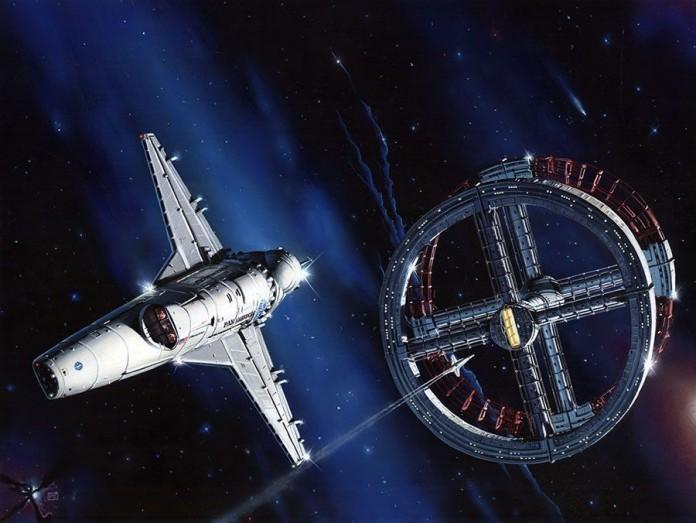In 1968, amidst the ever-growing tensions of the cold war between the United States and the Soviet Union, one of the most influential and masterfully crafted science-fiction films of the twentieth century was released: 2001: A Space Odyssey. Directed by auteur Stanley Kubrick and co-written by novelist Arthur C. Clarke, 2001 has influenced numerous cinematic works-such as Star Wars by George Lucas and Interstellar by Christopher Nolan-due to its status as the granddaddy of the Sci-Fi genre. In this month’s Cosmic Mariner, we’re entering the not-so-fictional world of 2001 to view how it influenced the very essence of space on celluloid as-well-as modern technology through its representation of space through real science and incredible practical effects.
In 1902, only seven years after the invention of commercial cinema, French filmmaker and visionary George Méliès produced the short film A Trip to the Moon in which spacefarers launch themselves from a cannon to the moon. This silent adventure film was the first-time space and the concept of exploring the lunar surface was represented in a moving image. Fast forward to 1968, and Stanley Kubrick, along with special effects supervisor Douglass Trumbull (who worked on Star Wars and others) would once again revolutionize the way cinema represented space and the exploration thereof.
In the first act of 2001, spacecraft float slowly around the vacuum of space to an unusual absence of sound; an aspect of space rarely touched upon. In addition, the film portrayed accurate orbital mechanics; a bold move at the time that could have left audiences bored. It did. In one particular scene, a Pan-American shuttle matches the rotational velocity of a space station to dock and unload the passengers. This scene would go on to influence films such as Interstellar that build upon this concept. In a pivotal sequence of Interstellar, a spacecraft must dock with an orbital station that has partially exploded, similarly, albeit at a much higher speed. In addition to a more accurate representation of spacecraft maneuverability, the film also defined what a space station would look like and how it would operate. Utilizing centrifugal force, a rotating space station can create artificial gravity. Throughout 2001, astronauts live aboard rotating spacecraft and space station designs that would go on to influence the designs of spacecraft in Interstellar, The Martian, Passengers, and other films within the sci-fi genre.

One of 2001: A Space Odyssey’s most influential aspects is the incredibly sophisticated production design and special effects. Released an entire year before the Apollo moon landing, 2001 managed to visually and technologically transport audiences thirty years into the future where technology is strikingly similar to modern-day devices. One of these incredible designs is the utilization of touch screen tablets with video telecommunications abilities. Today, we know these devices as the iPhone, iPad, and FaceTime, but in 1968, no such devices were in existence. Generations later, patents for these devices would utilize the concepts depicted in the film during court battles; such as the case when Apple Inc. sued Samsung for copying the design of the iPad. Samsung’s defense was that the technology already existed in Kubrick’s 2001: A Space Odyssey and that Apple technically stole the concept from the film. In addition to iPads and portable technology, the film also inspired AI voice assistants with the development and design of HAL 9000; a computer placed inside the Discovery that controls everyday functions with voice commands. This is strikingly similar to assistants in modern-day devices. Lastly, the stargate sequence, one of the most famous sequences in the history of film, depicted what every future space travel sequence in science-fiction films would look like. The film developed the slit-scan technique that allowed Kubrick and the effects team to play with light and achieve a “light tunnel” effect; later viewed in works such as Star Wars, Star Trek, and Galaxy Quest.
2001: A Space Odyssey stands as one of the most important science-fiction films ever projected onto the silver screen. From its incredibly realistic depiction of spacecraft maneuverability in the vacuum of space to the film’s uncanny prediction of future technology, Kubrick’s masterpiece has influenced both cinema and everyday technology stunningly. The film’s portrayal of rotating space stations has become the epitome of microgravity spacecraft design and has influenced concepts for future space stations. The creation of iPad devices and video communication has ultimately led to the development of revolutionary tech products we use daily. Science-fiction stargates have become commonplace and have inspired some of the most successful and wildly popular science-fiction films to reach theatres around the world. While 2001: A Space Odyssey may have fallen relatively flat during the initial release, with audiences and critics alike mixed in their feelings, the film has become an icon of the space film and exemplifies what can happen when we not only dream big but embrace the ideas of science.






























